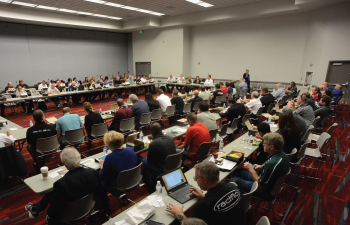SEMA News - July 2010
By Alysha Webb
Huge Room for Growth
 |
|
|
As margins on new-car sales continue to shrink dealerships are looking for new sources of income. So the future could be bright for the sale at 4S dealerships of parts that enhance appearance, comfort, or performance. Shanghai-based TNS Research International analysis reveals consumers are shifting to more “fun-based” emotional needs for their vehicles rather than the basic transportation, “family caring” or “belonging” needs of just a few years ago. |
|
As margins on new-car sales continue to shrink, dealerships are looking for new sources of income, so the future could be bright for the sale at 4S dealerships of parts that enhance appearance, comfort or performance. Not all 4S dealerships in China are allowed to sell non-OE brand accessories, though some ignore the ban. In any case, accessory sales of any kind are still a tiny portion of any Chinese dealership’s revenue stream.
According to a 2009 J.D. Power and Associates study, new-vehicle sales accounted for 56% of dealer revenue. Used-vehicle sales accounted for 23%. Service contributed 23%, and spare parts sales made up 10%. Accessory sales were part of the “Other” category, which contributed only 2% to dealership revenue.
Clearly, there is much room for growth in accessory sales through dealerships in China. First, however, more OEs must allow the sale of aftermarket brands in their dealerships. Just as important, demand must be created by educating Chinese consumers about customization opportunities.
Margins on new-car sales are being squeezed in China’s intensely competitive market. New-car sales margins in China ranged from 2.6% for U.S.-brand vehicles to 4.4% for local brands, according to J.D. Power. Those margins are likely to shrink in coming years as China’s more than 90 brands fight for market share. Dealers are being pushed by the OEs to develop new sources of revenue and may themselves begin to promote high-margin accessory sales as a source of revenue.
To be sure, however, the market for accessories that enhance performance, comfort or appearance is still only a tiny portion of China’s total accessory market. And the demand for such accessories is still small.
“Our best feeling remains that less than 10% of the car owners in China would conduct some kind of tuning or customized equipment upgrade to their vehicle,” said Eric Tai, a former project manager in the automotive sector for TNS Research International in Shanghai.
The total accessories market in China is hard to quantify because of extreme fragmentation. But some estimates put it at more than $14.6 billion annually. All agree that it is growing, spurred by the maturation of China’s automotive market. TNS studies show that consumers are shifting to more fun-based emotional needs for their vehicles rather than the basic transportation, “family caring” or “belonging” needs of just a few years ago, Tai said. As that change occurs, consumers will focus more on vehicle performance and will be more willing to invest in special kits, he said.
Dealerships are well-positioned to take advantage of that growth in demand because dealerships are still the primary source for aftermarket service needs, said Tai. Chinese consumers are wary of buying spare parts from non-authorized sources because of the high number of illegitimate parts on the market, he said.
Some dealerships in China are already selling non-OE brand accessories, whether it is allowed or not. And it is permitted in some parts of the country. A dealer in Dongguan, in south China’s Guangdong province, said that her dealership is permitted to sell both OE and non-OE parts. The non-OE parts are used primarily as gifts to customers because they are so much cheaper than the OE parts, she added.
Some very large dealership groups have set up consolidated accessory procurement offices, and they actively search for non-OE brand products, especially those related to comfort and appearance, said Teng Yong at consultancy A.T. Kearney in Shanghai. Quality and novelty are the two most important selection criteria, he said.
Another factor pointing to a bright future for non-OE brand parts at China’s dealerships is the growth of the second-hand car market. Currently, about three new cars are sold for every used car because China’s passenger car market is so young. In the United States, the opposite is true. But China’s light-vehicle sales grew to 12.96 million units in 2009, a 48% increase compared to the previous year, according to J.D. Power. The light-vehicle market is forecast to grow by close to 10% for the next decade, so the used-car market is bound to grow, too. That will likely help accessory sales, industry experts said. A larger used-car market will offer more opportunities for accessory sales, which the manufacturer has less control over, according to Dale Jones, vice president of Asia Pacific regional accounts at Urban Science.
Education is needed to provide a boost to accessory sales in dealerships, said Tai. The thing that is really limiting market growth is consumer mentality and their lack of knowledge about tuning and customization, he said.
“Parts suppliers should remain in China, as it does have great market potential,” said Tai. “I have no doubt this market will keep growing due to the sheer size of China’s new-car owners.”








